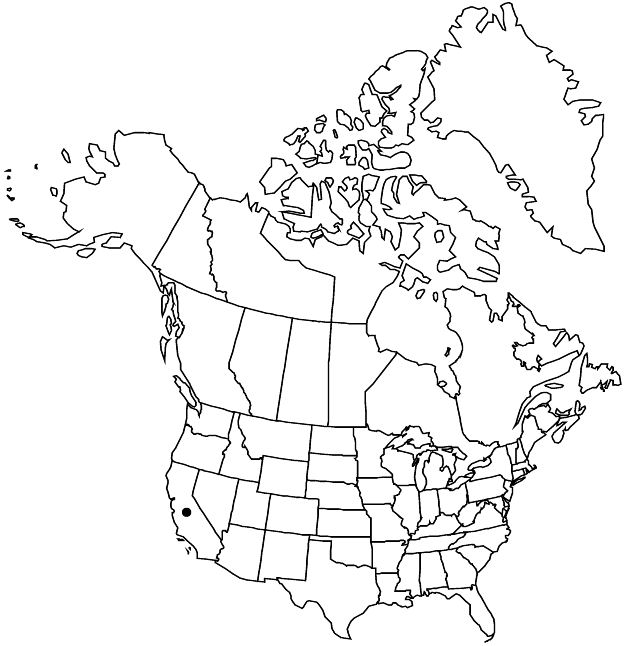Ceanothus megacarpus
N. Amer. Sylv. 2: 46. 1846.
Shrubs, 1.5–6 m. Stems erect to ascending, not rooting at nodes; branchlets grayish brown to brown, flexible, appressed puberulent to tomentulose, hairs straight. Leaves sometimes alternate, not fascicled, sometimes crowded; petiole 1–5 mm; blade flat to cupped, oval, elliptic, or oblanceolate, 10–25 (–33) × 5–19 mm, base cuneate to rounded, margins thick, usually entire, rarely remotely denticulate, teeth 5–7, apex obtuse, abaxial surface pale green, glabrous or sparsely strigillose on veins, adaxial surface green, glabrous. Inflorescences axillary, 1–2 cm. Flowers: sepals and petals white; nectary blue to black. Capsules 7–12 mm wide, not lobed; valves smooth or rugulose to weakly ridged near apex; horns subapical, prominent, erect, often rugulose, or weakly developed to absent, intermediate ridges absent. 2n = 24.
Discussion
Varieties 2 (2 in the flora).
Some populations of Ceanothus megacarpus are polymorphic for leaf arrangement. Plants assignable to either var. insularis or var. megacarpus based on leaf arrangement may have fruits intermediate to both varieties. Putative hybrids between var. megacarpus and C. cuneatus were reported by H. McMinn (1944), but their variable leaf arrangement (alternate and opposite on the same plant) may also represent intermediates between var. insularis and var. megacarpus.
Selected References
None.
Key
| 1 | Leaves mostly alternate; capsule valves rugulose to weakly ridged near apex; horns prominent. | Ceanothus megacarpus var. megacarpus |
| 1 | Leaves mostly opposite; fruit valves smooth; horns weakly developed or absent. | Ceanothus megacarpus var. insularis |
"thick" is not a number.
